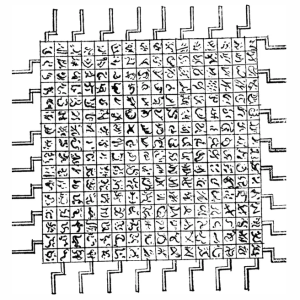“Gravity Battery”

Image by BBC: 'Gravity battery' generates power for first time in Edinburgh
By Scott Hamilton
In recent months there has been a renewed interest in a very old technology. People have been using gravity to store energy since the beginning of time. However, only recently has it been studied as a method of storing electrical power. The ancient Egyptians used gravity to store energy for lifting the large stones for building the pyramids. They found that if you lifted a small weight a long distance and attached it to a series of pulleys, the small stone could lift the large stone a shorter distance. They also used the power of water; they learned that if you raised water to a reservoir above the city, it would flow back down through the city and would release energy on the way down to turn water wheels and lift objects.
The very first pendulum clocks also used gravity to store energy to keep the clock running. You would lift a weight on the end of a chain that turned a gear as the weight fell, keeping the pendulum swinging and the hands of the clock turning for a couple days, rather than a couple of minutes. We have known for a long time that we can store energy by lifting objects and keeping them there until we need the energy.
I was shocked to read that researchers were calling the gravity battery a new invention. In this case it was simply the reuse of an existing technology. Where ancient Egypt lifted a smaller weight a long distance to lift a heavier weight a shorter distance with the stored energy from the height of the smaller weight, these modern scientists are lifting 1,000 ton weights with electricity from solar panels and wind farms to heights several hundred feet high. When the sun goes down or the wind stops blowing, they release the weight; as it falls it turns electric generator turbines, producing power when the sun is not available. The fascinating thing about this is they have found these to be 80 percent efficient, which means that for every 100 watts of power stored in the battery, you can get back 80 watts.
At first it might seem like 80 percent is really bad, until you realize that the lithium batteries, which are among some of the most efficient chemical batteries, only have an efficiency of 85 percent, have a limited lifetime, and require the mining and storage of dangerous chemicals. The gravity battery can be built with standard construction materials, requires no chemical reactions and creates no environmental impact once in operation. It can last more than 100 years under steady operation. The lithium batteries have a limited operating temperature range, which is outside the range of the desert heat, whereas the gravity battery has no environmental requirements. Seeing that the deserts are among the best places for solar farms, having storage capacity at the solar farm saves tremendous cost on the power transfer infrastructure.
So let’s get some details on how gravity batteries work. There are two main types of gravity batteries in use today; the most popular are hydroelectric dams, most of which utilize natural rivers and the natural water-cycle, simply harvesting power from natural water flow. Some of them on the other hand, like Taum Sauk right here in Missouri, pump water from a lower reservoir into an upper reservoir during off peak hours and then release water from the dam when there is extra demand on the grid. This type of gravity battery is in use around the world.
The second type of gravity battery is the dry storage battery, where large weights (1,000 tons or more) are lifted inches at a time, utilizing excess power from the grid, then the weight is allowed to fall, spinning a turbine on its way down and creating electricity, just like the Taum Suak lake except using concrete instead of water. As it turns out, both are very efficient means of storing power.
To me, this raised a couple of questions. The first is, would it be possible to replace the lead-acid or lithium batteries in home solar installations with a smaller version of the dry storage battery? I have given this some thought and while it is entirely possible, it turns out not being all that practical. The average American household consumes 30 kilowatt-hours (kwh) per day. Which means that, on average, they use just over 1,000 watts on a fairly constant basis. So how do we convert this average power usage to a size and weight of a “battery” to store the necessary power to get through an average week, if you are on off-grid solar? This would mean a need of 210 kwh, which is about four car batteries.
So how do we figure out what that means in terms of weight and height required for a similar dry gravity battery? Let’s start out first by gathering some facts. A 1-pound weight lifted 1-foot in the air and dropped will produce 1.3-joules of energy. There are 3.6 million joules in a single kwh. This means to power an average American home you must either lift a very heavy weight, or lift it to a very high place. An average two-story home is around 26-feet from the peak of the roof to the ground, so let’s just start with that height (you don’t want to build a taller house to store more energy). So to get just the 30 kwh to last a single day, you need a three million pound weight. It is clear we need to lift it higher to make the weight reasonable. If we calculate the other way and say we use a 30-ton weight, we only have to lift it to 1,185 feet high. As you can see, it quickly becomes impractical for single home applications. If we use hydroelectric batteries it still doesn’t work out well on a small scale; we have to lift 8070 gallons of water to a height of 1,185 feet to power a single house. Power companies can do it on a large scale because ponds and lakes hold millions of gallons of water. While not impossible on a small scale, it definitely becomes impractical. Until next week stay safe and learn something new.
Scott Hamilton is an Expert in Emerging Technologies at ATOS and can be reached with questions and comments via email to shamilton@techshepherd.org or through his website at https://www.techshepherd.org.






